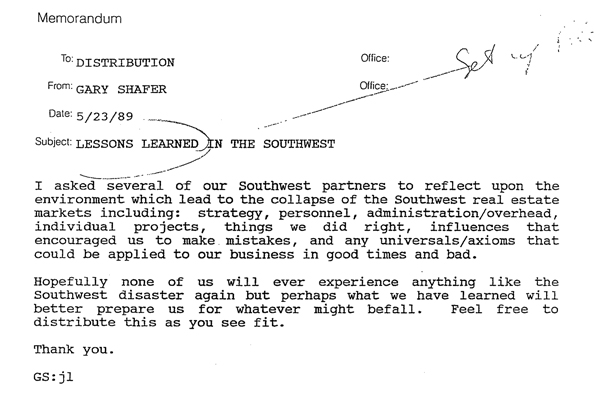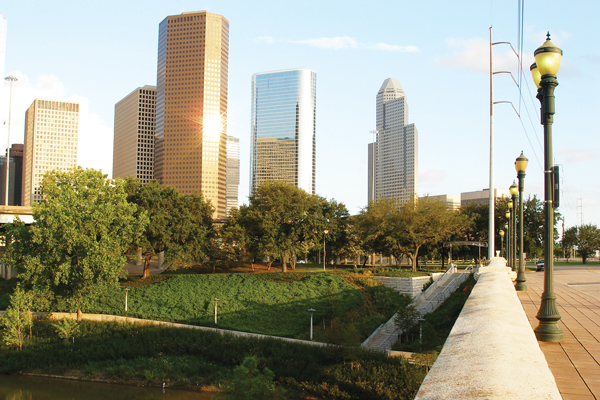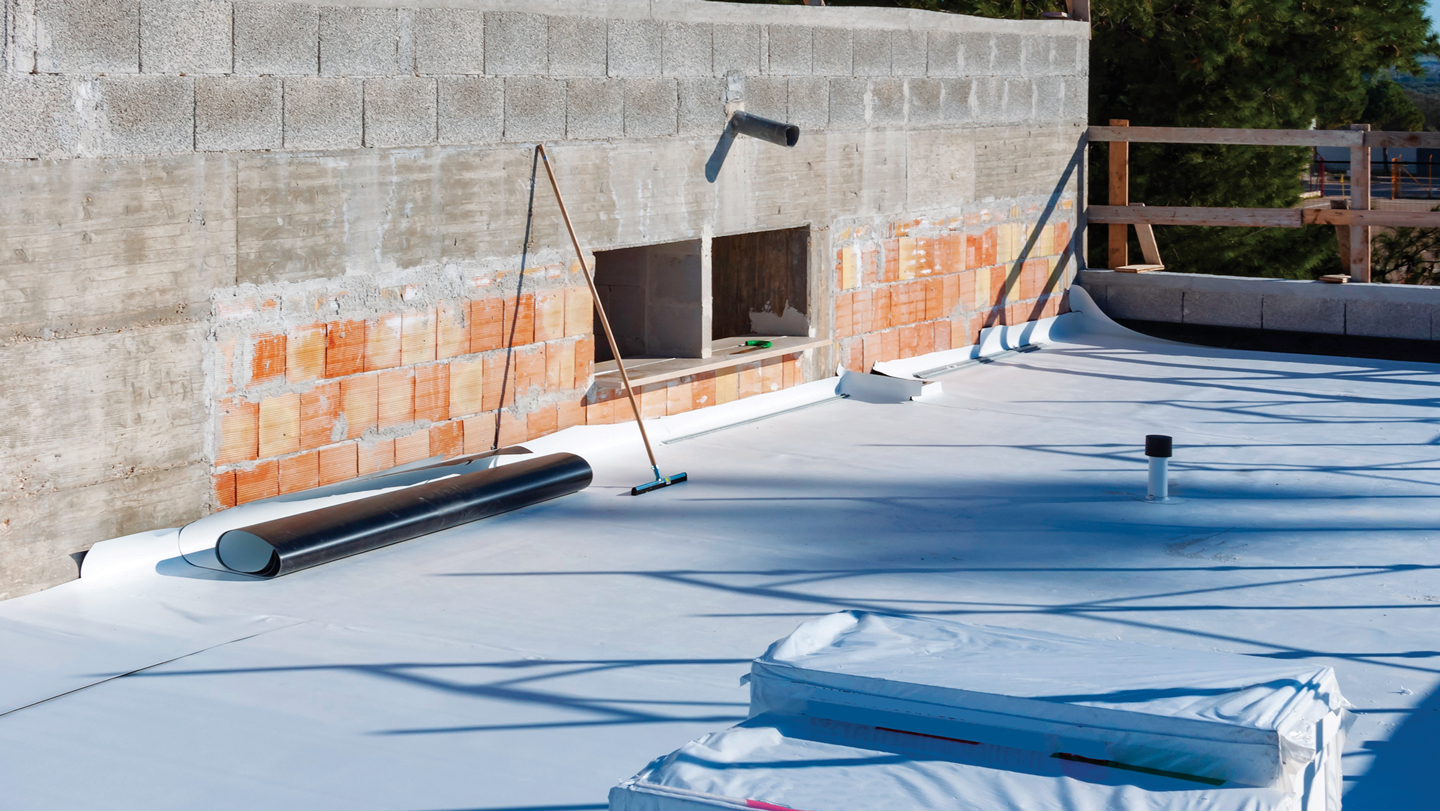Words from the Past Provide Guidance for Today

A “lessons learned” document from 1989 can help real estate professionals navigate the current downturn.
A single word probably best describes the current climate in commercial real estate — unease.
For example, the latest NAIOP CRE Sentiment Index, published in April, predicts higher interest rates, higher cap rates, and a decrease in equity and debt supply through the rest of 2023. The office sector looks especially dire.
“The office market will face significant challenges over the next 12 months with the best-in-class properties improving and the rest of the market struggling to capture limited demand,” according to one CRE Sentiment Index survey participant. “Tenants will continue to improve their offerings to their employees to attract them back into the office, but will be slow to make decisions, delaying capital expenditures as they face down a potential recession.” NAIOP’s office space demand forecast, published in the fall of 2022, notes that the national vacancy rate is at 17.1%, the highest level since the third quarter of 1993.
Additionally, a Morgan Stanley analysis published in April revealed that commercial real estate faces a massive “refinancing wall,” with more than half of the $2.9 trillion in commercial mortgages due for refinancing in the next few years. This year alone, close to $450 billion of commercial real estate debt is set to mature, according to data from Trepp. Lending rates could rise 3.5 to 4.5 percentage points higher than existing ones — which are already at the highest level in 40 years due to the Federal Reserve’s efforts to reduce inflation by raising interest rates. Morgan Stanley further predicts a potential 40% drop in pricing for office and retail. That’s similar to the declines seen during the Global Financial Crisis (GFC) of 2007 to 2009.
It’s Happened Before
While worries about the current downturn are creating a lot of unease, it’s important to remember the cyclical nature of real estate. The industry has been through these periods many times before, and the past can provide lessons to help real estate professionals find a way through the current crisis.

The 1989 Trammell Crow memorandum “Lessons Learned in the Southwest” has circulated among real estate professionals for many years.
Consider the steep crash in commercial real estate that began in the late 1980s and didn’t fully resolve until the mid-1990s. Several factors created that down cycle. First, excessive speculation and overbuilding, fueled by a surge of cheap capital and deregulation in the financial industry, resulted in a glut of commercial properties with low occupancy rates (and also led to the savings and loan crisis).
A 1997 study by the Federal Deposit Insurance Corporation laid out the scale of the boom and bust in office construction. In terms of floor space, the annual average for completed projects in the 31 largest office markets across the country was 33.6 million square feet between 1975 and 1979. That figure nearly tripled during the next five years, reaching an annual average of 97.8 million square feet. From 1985 to 1989, the pace of completions remained roughly the same before dropping dramatically to an average of 28.1 million square feet per year between 1990 and 1994.
Next came the Tax Reform Act of 1986, which eliminated key tax incentives that previously encouraged investment in commercial real estate. That further dampened demand, causing property values to plummet and leading to widespread defaults on loans, bank failures and a prolonged recession in commercial real estate.
By 1989, it was clear that the boom was over.

An article in the Spring 2018 issue of “Columns,” published by AIA Dallas, notes that by the time the Southwestern real estate bust bottomed out, “there was more vacant office space in the towers of Houston (above) than there was total office space in Atlanta and Denver combined.”
The Trammell Crow Company, at the time the biggest real estate firm in the country, was hit especially hard by the downturn. According to a 1992 Bloomberg article, the value of Trammell Crow developments plummeted from $2.2 billion in 1985 to less than $100 million in 1991. Office vacancy rates in Dallas and Phoenix, two key areas for Crow, rose to almost 30% in the early 1990s. The company was also forced to shed staff rapidly.
Business was particularly tough for the company in the Southwest, where office properties were overbuilt during a boom in oil prices that eventually collapsed dramatically.
“West Texas Intermediate crude, which had been as high as $100 a barrel in 1980, plunged from $68 to $26 a barrel within a month: April 1986,” according to an article entitled “Dallas’ Two Hard Lessons on Vacancy” in the Spring 2018 issue of “Columns,” published by AIA Dallas. The article notes that by the time the bust bottomed out, “there was more vacant office space in the towers of Houston than there was total office space in Atlanta and Denver combined.”
An Honest Assessment
In the spring of 1989, Gary Shafer, managing partner at Trammell Crow, sent a memo to 19 of the firm’s regional partners seeking to assess what had gone wrong during the crushing downturn. The result was a remarkably frank 100-page document that provides timeless advice for real estate professionals facing an unfavorable business climate.
“It was a summary of the lessons all the partners learned from that large down cycle and what they would do differently next time around,” said John Drachman, co-founder and head of capital markets for Waterford, a real estate investment and development company in Newport Beach, California, and a former NAIOP Research Foundation Visionary.
He said the Trammell Crow document is essential reading for everyone in the industry.
“I think every real estate professional should read that document, probably multiple times,” Drachman said. “Knowing and studying previous cycles means you can learn from others' mistakes, which is always easier and less costly than learning from your own. You will, of course, make mistakes, but history has a funny way of repeating itself.”
Drachman said he first encountered the document in graduate school at the University of Southern California from 2007 to 2009, at the height of the GFC.

In the early 1990s, office vacancy rates in Dallas, Trammell Crow’s hometown, rose to almost 30%.
“My classmates and I were amazed at how similar the cycle during the GFC was to the cycle in the early 1990s,” he said. “It was the first cycle for all of us, so we had no idea what to expect. Reading that document and seeing so many similarities made us realize that these cycles were normal in real estate. It was a wealth of honest information about what people would have done differently leading up to that cycle.”
As the commercial real estate industry makes its way through what appears to be an uncertain year, with office loan defaults taking off and layoffs starting at some firms, Drachman says this 35-year-old document is as relevant now as it was back then.
“To me, it’s extremely relevant in terms of how cycles have similar patterns,” he said, adding that the current cycle is different for several reasons, ranging from the impact of remote work in the post-pandemic world, to the many ways that e-commerce has disrupted retail and industrial. However, Drachman emphasized that cycles can be similar in terms of overdevelopment and a slowing economy leading to poor asset performance and a range of negative outcomes.
“It shows how these cycles are an expected part of the business,” he said. “Not a fun part of the business, but something normal. When you are in a cycle, it can be depressing and feel like it will never end. Having stories of previous cycles helps overcome that fear as you learn to accept them for what they are — normal.”
Drachman said he had four key takeaways from the Trammell Crow document — the value of always having cash on hand, the importance of considering downside risks and underwriting downside scenarios, the prudence of avoiding debt in land acquisition because land has no cash flow to it and is the first thing to lose value in a downturn, and perhaps most importantly, the wisdom of restraint when faced with aggressive or risky deals.
“This was an important recurring theme,” he said. “Many of the partners talked about the deals they wish they did not do. Many of them said that they did deals because money was available and they could do it, but then they regretted it. This is such a crucial point and one of the toughest parts of the development/investment business in terms of having the confidence and discipline not to pursue aggressive or risky opportunities even when the capital is there.”
For Drachman, real estate is about playing offense and defense, but in the right proportions.
“I think the goal should be to play 65% to 70% offense and 30% to 35% defense,” he said. “You must score points to win, but to win over the course of a long career you also must limit turnovers and play smart, so to speak. I think about this when I think of my career. You want to take smart, calculated risks, which means you must play more offense than defense, but you want to make sure they are well-calculated risks where you have strong downside protection. Real estate is cyclical, which means sometimes the weather is nice and sometimes it’s snowing. You have to know how to win in both environments.”
Looking Ahead
Drachman has advice for real estate professionals who are experiencing their first down cycle.
“Ride the wave,” he said. “Do not fight the cycle and take it one day at a time. It will be scary at times, and you will feel alone, but understand that everyone in real estate feels that way. Take the time to learn as much as you can and make sure you stick with this industry and do not give up. This industry rewards the professionals who make it through cycles, because at the end of every down cycle is a strong up market. Real estate has proven that time and time again. Cycles can create tremendous opportunities, and to me, it takes the right mindset to get through it. Keep looking forward.”
Drachman also urges those who are relatively new to the industry to do whatever they can to “stay alive until 2025,” when he believes that commercial real estate will be in a strongly positive cycle.
“If you have to take a step-back job, do it,” he recently posted on LinkedIn. “If you have to move from acquisitions to asset management, do it. If you need to go back to graduate school, do it. If you need to severely cut back on what you spend money on, do it. If you have to take a job in loan workouts, do it. These periods separate the people truly committed to this industry from the ones who are not. … You gain your true self-confidence in this industry when times are hard, not when times are easy. If you ‘stay alive until 2025,’ you will get to another great market where you can create real wealth for yourself or take large leaps in your career. This business rewards people who stay fully committed to it, continually grind and never waver in the face of adversity. Myself and many in my generation who survived the GFC are proof positive of that.”
Trey Barrineau is the managing editor of publications for NAIOP.
Evergreen Advice from 1989A few bullet points from the 100-page Trammell Crow memorandum from 1989 titled “Lessons Learned in the Southwest”
To view or download the full document, visit www.slideshare.net/wdahlstrom/memo-trammell-crow-co-1989-lessons-learned-in-a-down-market |
Comparing Down CyclesIn the summer of 2017, Development magazine published a retrospective article marking the association’s 50th anniversary that included brief summaries of two financial crises that deeply affected the commercial real estate industry: 1980s to 1990s: “The Economic Recovery Tax Act of 1981 (ERTA) heavily benefits CRE by lowering ordinary income and capital gains tax rates and introducing the accelerated cost recovery system, improving the rate of return on CRE investment. Syndicators begin to package and sell off real estate losses as tax shelters. The savings and loan industry makes riskier CRE loans to achieve higher returns, moving real estate ownership from individuals to the books of institutions. The Tax Reform Act of 1986 repeals the ERTA rules; less favorable accounting treatments are applied to properties that are significantly overvalued. It takes until the mid-1990s for commercial real estate values to recover.” 2007-2009: “The U.S. housing bubble bursts and residential mortgage defaults skyrocket. Banks lose tremendous amounts of money; many eventually lack the reserves required to meet liquidity requirements. The Dow loses $1.2 trillion on September 29, 2008, on news that Congress did not pass a bill to bail out banks from their liquidity shortages. Lehman Brothers collapses, triggering a global financial crisis exposing the depth and breadth of the subprime mortgage contagion affecting securitized mortgage assets; credit default swaps; institutional investors; and commercial, investment and central banks worldwide. More than three million jobs are lost and vacancies rise into the double digits across most real estate asset classes.” |
NAIOP’s Center for EducationAdvance your career in commercial real estate with NAIOP’s courses and certificate programs. NAIOP has developed a series of well-regarded courses that focus on various specialties within commercial real estate and has assembled a faculty of industry experts to lead course sessions and share real-world experiences. NAIOP courses are based upon core competencies, which are specialized categories of applied skills and established industry practices, organized into the body of knowledge, that are essential to delivering financially successful projects. To learn more, visit www.naiop.org/education-and-career/ |






